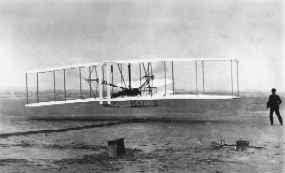
Obstacles are things a person sees when he takes his eyes off his goal. – E. Joseph Cossman
I read a story about a young man who aimed to be a star journalist. However, he lived in a small town with little hope of attaining that goal.
One day the dam upstream broke and the town was flooded. Seizing the opportunity, the aspiring journalist got in a rowboat and headed out to find a story. A short time later, he discovered a woman sitting on her rooftop. He tied up the boat and told her what he was after. They watched as various items floated past the house. The woman would say, “Now there’s a story,” or “No, that’s not a story,” as each item floated past them.
Finally, a hat floats by and then does a 180-degree turn, goes back upstream a ways, and does another 180-degree turn. This continues for a while. Excited, the young man exclaims, “Now, that’s a story!” The woman turns to the young man and says, “Oh no, that’s not a story, that’s my husband. He said he was going to mow the lawn come hell or high water!”.
In life, as in leadership, we often face obstacles disguised as opportunities. But if we take our goals for too long we can be distracted and soon we only see obstacles. As leaders, we must be intentional about this challenge.
Consider what happened to Thomas Edison in December 1914. Thomas Edison experienced such a defining moment. His lab caught fire and everything was destroyed. He lost almost $1 million of equipment and the record of much of his work. The next morning, when walking around the charred embers of his hopes and dreams, the 67-year-old inventor said, “There is value in disaster. All our mistakes are burned up. Now we can start anew.”
How can an aspiring young journalist, or an inventor like Edison, find the opportunity in chaos and obstacles? There are a few clues worth discovering and applying in your leadership.
One person’s flood is another person’s break
When the dam broke and the town flooded, it was an opportunity for the aspiring journalist to find his big story – to get his big break. He had the ambition to get in the boat and look for it.
When the dams break around you, what you choose to see and how you respond will make all the difference between it being an obstacle and an opportunity. Click To TweetOne person’s fire is another person’s reset
When Edison’s lab was destroyed by fire when he was 67, throwing it in the towel and calling it quits would have been easy. I am sure many would not have blamed him. But he chose to start anew. Within thirty days after the fire, Edison delivered the first phonograph.
For Edison, the fire was his reset. Many of his great works came after the fire. When you face obstacles and challenges, it allows you the opportunity to hit the reset button and move in a new and better direction.
Final Thoughts
Here is a challenge for you that comes from John Maxwell. He asks, “The last time you failed, did you stop trying because you failed, or did you fail because you stopped trying?” Much is riding on your answer. You will face obstacles, but whether you turn them into opportunities is what you have to decide.
©2024 Doug Dickerson













